Uninterruptible power supply unit for a heating boiler: principle of operation + subtleties of choosing uninterruptible power supplies
Do you know the feeling when you are left without electricity at the most inopportune moment? Agree, it is difficult to find a convenient time to go off the grid. Many private homes are already equipped with autonomous generators in case of prolonged power loss. It would be nice to also have a power supply for the boiler, since this equipment has sensitive components. The serviceability and safety of the boiler system depends on the latter.
A high-quality uninterruptible power supply will keep you calm: you won’t have to deal with incomprehensible errors, wait for technicians, or pay for repairs. From this article you will learn information about the operation of power supplies, their types, and criteria for error-free selection of a device under any conditions.
Uninterruptible power supplies appeared in connection with the need to protect against instability of electrical networks and power outages. Under different circumstances, a certain type of uninterruptible power supply is needed, but the rest can be abandoned. Find out more about this in our article.
The content of the article:
Purpose and principle of operation of uninterruptible power supply systems
In individual homes, boilers are often the only device for heating water and heating. Problems in the electrical networks serving such buildings cause great inconvenience.
At the same time, boiler panels and control units, as well as their automatic installations, require high-quality power supply.

Smoothes out this problem uninterruptable power source (UPS, uninterruptible power supply, uninterruptible power supply unit) is a simple device that provides some time of stable battery life.
The backup power device is switched on after failures and accidents and supplies the entire boiler control system with electricity. The UPS can do this for several tens of minutes and even more than half a day.
The main purpose of a UPS is to supply equipment with power and voltage in the event that the main power supply network stops supplying them. There are especially many interruptions in the winter, sometimes due to frost, sometimes due to savings. Due to this UPS for boilers will be very relevant in large households. Due to frequent power outages in private sectors, UPSs are becoming more and more in demand.
The second main function of the UPS is protection against fluctuations and abnormal network parameters. If there is a power outage or many parameters have changed, the UPS will switch to battery operation.
UPS is often used with solid fuel boilers. The pumps of such boilers provide movement and circulation in the radiators. Since the fuel continues to burn after the power is turned off, the remaining liquid in the boiler may boil. Without using the uninterruptible power supply, this situation will end in breakdown or complete failure of the boiler, and even an explosion is possible.
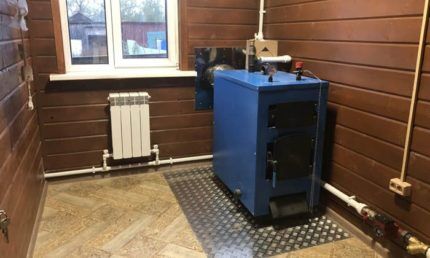
Constant operation of solid fuel or gas boiler, its ignition and control panel provides not only heating or water heating itself, but also protects against freezing of the coolant in the pipes, which can harm the entire heating system.
In most modern boiler models, coolant circulation is controlled electric pumps. The thermostat controls the outside temperature. The pump begins pumping coolant as soon as it drops below the permissible limit. Then the gas valve lights up, the burner starts working, combustion energy fills the coolant and the fan turns on. The boiler control is available in the electronic unit all this time.
Almost all structural elements from this cycle require high-quality electricity with an ideal current shape:
- pump;
- gas valve;
- fan;
- the electronic unit.
In some applications, poor current waveform will have critical consequences.
Uninterruptible power supplies have different principles of operation and structure. UPS for boilers usually has a battery (battery, battery) and switches to emergency power.
Types of backup power supplies
There are no uninterruptible power supplies specifically for gas or solid fuel boilers. There are only 3 types of UPS based on the way they operate, and they all represent 3 different price categories.
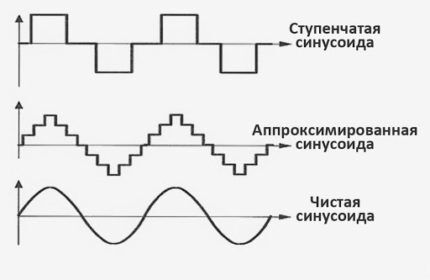
Heating boiler systems are supplied with the following UPS:
- Offline (off-line, backup).
- Line-interactive.
- Online (on-line, double conversion).
Offline UPS - This is a group of budget devices that switch power to the battery and do not equalize the voltage parameters.They include switch devices and a battery. In mains power mode, the pump and boiler control unit receive energy directly from the mains.
Backup power is started through the switch. Off-line - the least reliable and the cheapest. An off-line UPS has the same voltage shape as the mains, and the transition time to battery operation is quite long. The main caveat is that there is no stabilization of the mains voltage.
Line-interactive uninterruptible power supplies have a built-in stabilizer. Thanks to it, the device continues to operate from the mains even with significant voltage fluctuations and is therefore more reliable. These devices do not switch to backup power after small power surges, like off-line devices. Line-interactive devices have 2 main subcategories: UPS with regular and irregular sine waves.
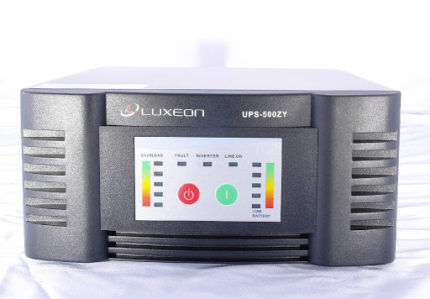
Characteristics of line-interactive:
- the output signal can be stepped or smooth;
- long work;
- long service life;
- long transit period of operation without switching to a battery;
- voltage equalization with a stabilizer.
Online devices have a fundamentally different structure than off-line and line-interactive. On-line devices convert alternating current into direct current, and then again into alternating current.
Their battery is charged at a reduced constant voltage. It is constantly active, does not require switching and immediately starts working as soon as the mains voltage is lost. The battery also powers the boiler if the mains voltage is available but too low.
On-line parameters:
- frequency and voltage equalization;
- instant switching on of backup power;
- The sine wave at the output is almost ideal.
As for the sinusoid, in on-line devices it is smooth, not stepped, and has no noticeable distortions. At the same time, for many gas boilers, frequency stability is fundamentally important.
On-line models provide 100% protection in any operating mode. This concerns the safety of the boiler, its parts and the uninterruptible power supply itself, associated with problems in the electrical network. The protection works in case of any disturbances on any part of the network.
The device includes a rectifier, inverter and bypass. The rectifier converts the AC current to constant, the inverter performs the reverse action, and the bypass is a backup power supply line that is used when UPS parts break down.
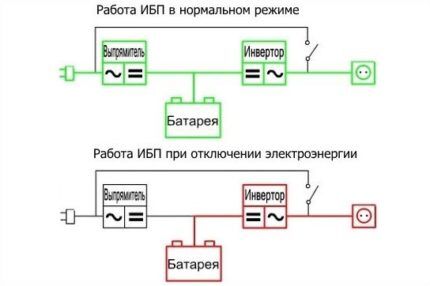
Online models are invaluable for critical or sensitive loads, which many boiler systems are. With low efficiency and service life, on-line UPSs are the most powerful.
Structurally, on-line UPSs are able to interact with the battery and generator. Usually with both sources in the same model. An on-line UPS has an inverter that is constantly running, which is its main feature. All powerful UPS systems are now trying to use this online scheme.
Comparison of characteristics of different UPS for a boiler
Backup uninterruptible power supplies were used with old desktop computers, and they were usually sufficient. In industrial and private networks there was and is a need for more powerful and complex uninterruptible power supplies.Modern boilers and all boilers with pumps are poorly compatible or incompatible with offline UPSs.
Almost all offline uninterruptible power supplies have modest power. The efficiency of these UPSs in case of power problems reaches up to 60%.
The switching device of line-interactive UPSs stabilizes the voltage, and in this case, significant voltage deviations from the norm should not lead to switching to autonomous operation. In addition, line-interactive devices support two modes: for unstable parameters and complete loss of power supply.
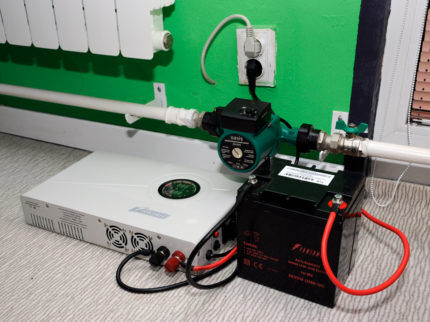
These UPSs operate with input voltage deviations of up to 20%. The output voltage is almost always equal to the norm. The efficiency of line-interactive is higher than that of on-line and off-line, and the level of protection provided reaches 85%.
The on-line uninterruptible power supply supplies high quality alternating current at the output. There is no switching time between its battery and the network at all. The online UPS inverter can operate without mains power supply.
In addition to these advantages, there are also disadvantages. The battery life when working on-line is usually lower, as is the efficiency of the entire device. Prices for on-line models are significantly higher. On-line has a considerable noise level and significant heat generation.
The most popular are line-interactive. They have a stabilizer, although not the most accurate. If the mains voltage corresponds to the range of the uninterruptible power supply (for example, within 130 Volts), the latter will stabilize the indicator with an accuracy of about 10%. This figure is considered acceptable in everyday life.The switch to battery operation will always occur when the stabilizer cannot meet this 10%.
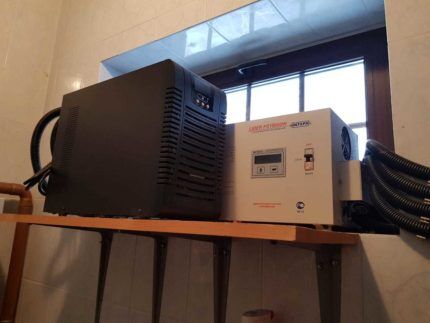
Line-interactive are closer in meaning to off-line devices - they also have a certain range in which the device operates in normal power supply mode from the network, and not in backup mode. The difference is that the acceptable voltage range for off-line devices is much narrower. In off-line devices, the emphasis is on protection against sudden power outages, rather than power surges.
Criteria for choosing an uninterruptible power supply for a boiler
In total, there are more than 5 principles for successfully choosing an uninterruptible power supply. In general, preference should be given to newer and more advanced devices. Keep in mind the peculiarities of Russian power grids - they are overwhelmingly unstable.
Pay attention to the key characteristics:
- Power.
- Charger current.
- Battery capacity.
- Possibility of connecting external batteries.
- Duration of operation in autonomous/emergency mode.
- Transition time to battery.
- The shape of the output signal (voltage), i.e. the output sine wave.
- The presence of a through zero.
Power. For double-circuit boilers, heating a lot of tap water, the uninterruptible power supply will either be useless or will support the work for a short time and only if it is very powerful. You will have to take into account the number of circulation pumps (the more, the higher the power needed) and the power of the boiler itself.
Remember that UPSs up to 200 W are useful for the lowest-power boilers.If the boiler runs on gas, it has a power of approximately 80 to 300 W and above. An uninterruptible power supply should be purchased 25% more powerful than the boiler. Typically, the UPS power for a boiler is limited to 600 W.
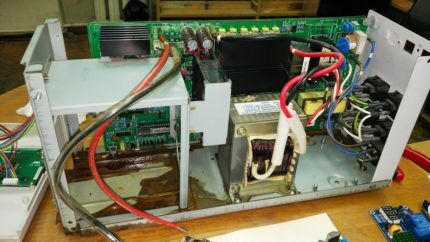
The power of the UPS is calculated using the formula A=B/C×D, Where:
- A - battery power (W, watts);
- B - boiler power (W, watts);
- C is the reactive load coefficient (0.7);
- D - 3-fold starting current reserve (3).
The result will be the minimum required battery power, but 30% should be added to it in reserve.
The calculations must also include the power of all pumps, if they are present in the system. Enter this indicator into the numerator, adding it to the boiler power.
Concerning charger current for batteries, then 1 A will be enough to operate one 10 Ah battery. A battery with a capacity of 80-100 Ah can be used for a current of 8 A. If you make a mistake in selecting a battery, then both the battery itself and the uninterruptible power supply will last less than expected.
The amount of current limits the ability to use a capacity greater than a certain value, so you should immediately choose a powerful charger. Selecting an uninterruptible power supply based on the current parameter is at the same time selecting based on the duration of autonomous operation.
The next main parameter is Battery capacity. Based on this, backup devices with the ability to connect external batteries are suitable. Such UPSs operate much longer in emergency mode, that is, after being disconnected from the network.It is recommended to charge external batteries fully, because if they are not fully recharged, the battery life will be shorter.
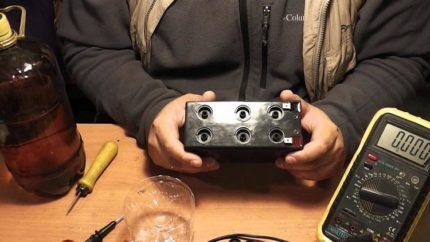
An important parameter is autonomy. The maximum battery life depends on the battery or battery pack. A UPS with one built-in battery sometimes only provides 10-20 minutes of battery life.
To calculate the battery life, you need to multiply the number of internal and external batteries and the capacity of each. Ideally, you should buy a UPS for many batteries with an external battery connection and then buy the batteries themselves separately. This way it will be possible to extend battery life to several hours, which will also avoid complete discharge.
It should be taken into account UPS charger power. It limits the possibilities in terms of offline mode. Some on-line UPSs produce more than 20 A, and this allows you to use units with 200-300 Ah.
The total capacity of the batteries is increased due to a parallel connection; a serial connection sums up the voltage, and this may be needed by uninterruptible power supplies that do not require a 12 V DC connection. High-power UPSs require a higher circuit voltage for the device to operate at high quality.
The battery life reaches 10 hours or more, and much depends on the power of the boiler, the charger current and the battery capacity. The regularity of network surges and power outages should be taken into account. In this case, pay attention to the quality of the protective system against fluctuations in the network.
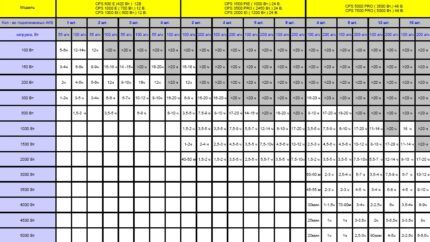
One-time battery life is calculated using the formula T = Q × U / W, Where:
- T—time (hours);
- Q—battery capacity (Ah, ampere hour);
- U is its voltage (V, volts);
- W is the total load power (W, watts).
Switching speed to battery shows how quickly the uninterruptible power supply will switch to battery operation in the event of a power failure. Online devices switch to “reserve” instantly, others do this with a delay of no less than 0.002-0.015 seconds, and sometimes several seconds.
Output voltage form. The signal that comes out of the uninterruptible power supply and enters the boiler affects its operation. The movement of electric motors of circulation pumps depends on the parameters of electricity. UPSs of low and average quality when operating on battery power and an unstable power supply supply current in the form of a meander, that is, in the form of an uneven or modified sine wave. The boiler will operate unevenly, which will further increase the load on it and electricity consumption.
The voltage waveform at the output of the UPS is of key importance. It may look like an approximated sine wave or trapezoid. Such parameters are poorly tolerated by circulation pumps. This will be indicated by a viscous noise and jerky operation. An uninterruptible power supply for a pump must be selected with the best characteristics, otherwise the pump will break down over time.
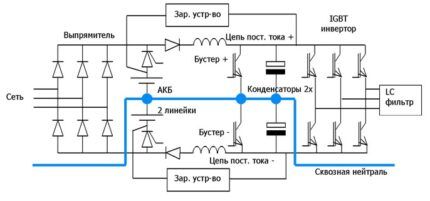
Double inverting UPSs not only provide a near-ideal sine wave, but also have an effective system against network surges. Line-interactive are ideal for expensive boilers and equipment that often break down.
For reliable networks, stabilizers are needed to a lesser extent. With high-quality network voltage and stable operation during rare outages, a cheap off-line uninterruptible power supply becomes a profitable option.
With frequent jumps, a stabilizer is definitely needed. The passport for uninterruptible power supplies with stabilizers ideally mentions the voltage form. You should not buy a UPS without such data.
Through zero. Boilers can be phase-dependent or phase-independent. For phase-dependent boilers, you will have to choose a UPS with a through zero and under the boiler. Phase-independent ones can even work from a computer uninterruptible power supply if it produces a pure sine wave.
All characteristics should be given importance taking into account the fact that you have a gas or solid fuel boiler. You should ask right on the spot whether it is contraindicated to use a particular UPS for a gas boiler.
Taking into account all the criteria, the best option in terms of price-quality ratio, reliability, service life and battery life are line-interactive UPSs with the correct sine wave.
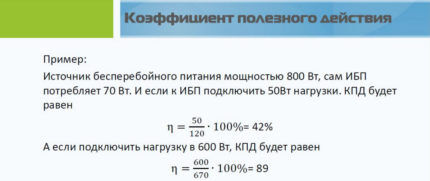
Installation and operation:
- Uninterruptible power supplies are installed near the heating system, in places where the surrounding conditions will not affect the quality of the UPS operation.
- The documentation indicates the optimal temperature and humidity - follow these instructions.
- Monitor the condition of the room - there should be no explosive or flammable liquids or vapors of aggressive reagents.
- Connect the uninterruptible power supply to the boiler with cables of the correct cross-section.
- Ground all equipment.
Be interested in the capabilities of the equipment. Good devices have protection against complete battery discharge, overheating, short circuits, and various overloads. Built-in relay stabilizers provide a smooth sine wave at unstable voltage.
Conclusions and useful video on the topic
How to choose a UPS for a boiler, calculation of parameters:
Review of the Volter UPS-300 uninterruptible power supply for the boiler, instructions for its operation:
Interaction between the UPS and the heating system pump, checking the Powerman Smart uninterruptible power supply:
Uninterruptible power supplies increase the safety of boilers. Not so long ago, almost no one used a UPS. Now, in many individual homes and businesses, where electricity is often supplied with low quality electricity, uninterruptible power supplies are increasingly used. UPSs can be offline, line-interactive and online. Offline ones are a budget option, and in many cases they are quite sufficient. Online UPSs reduce the likelihood of breakdowns to a minimum. Linear interactive is ideal in most cases.
Write comments and ask questions about the topic of the article. Exchange information with other readers. Your experience may be useful. Tell us about how you chose or bought an uninterruptible power supply. The contact form is located below the article.



